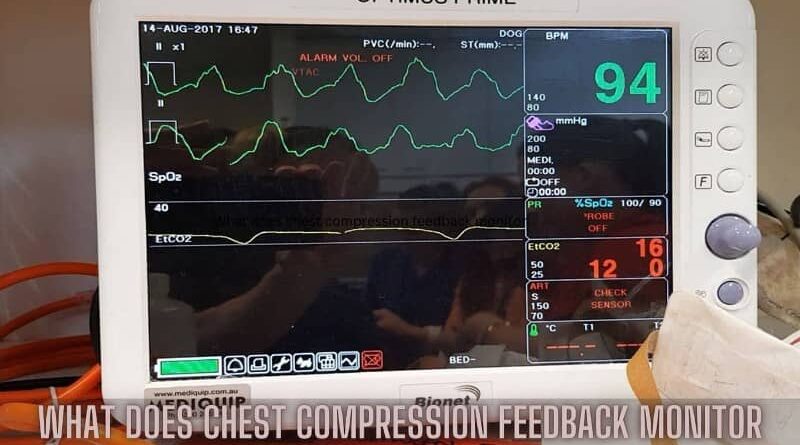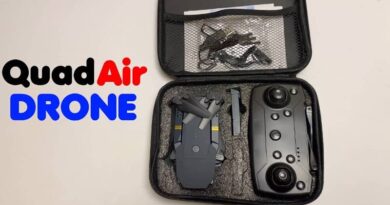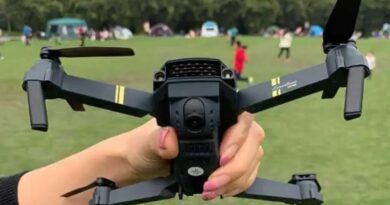
The chances of someone surviving a cardiac arrest are significantly increased when they receive immediate cardiopulmonary resuscitation (CPR). A vital part of CPR is performing chest compressions, which promote the body’s circulation of oxygenated blood.
It can be challenging to get the ideal compression depth and rate, though, particularly in high-stress situations. This is where the assistance of contemporary technology is needed.
A chest compression feedback device is a tool that provides real-time information and guidance during CPR. It monitors crucial aspects such as the depth, rate, and recoil of chest compressions, ensuring that they are performed correctly and optimally.
Rescuers can improve the patient’s outcome by employing this equipment to increase the effectiveness of their chest compressions. In this post, we shall examine the precise functions of a chest compression feedback device and how they enhance resuscitation attempts.
Overview
Sophisticated devices called chest compression feedback devices give instantaneous feedback on how well a person performs chest compressions during CPR. By guaranteeing accurate and efficient compressions, these tools are essential to preserving the integrity of the CPR procedure.
Importance in CPR
CPR is a critical life-saving technique that requires precision and accuracy, especially without immediate professional medical assistance. Chest Compression Feedback Devices serve as valuable aids in guiding individuals, both trained and untrained, to administer high-quality chest compressions.
How Chest Compression Feedback Devices Work?
A. Sensor Technology
The core of these devices lies in advanced sensor technology. High-precision sensors are strategically placed to monitor chest compressions’ depth, rate, and recoil. These sensors capture real-time data, providing instant feedback to the person administering CPR.
B. Real-time Feedback Mechanism
A game changer, for instance, is the real-time feedback mechanism. Provides users with direct feedback regarding compression depths and rates during chest compressions. This allows for adjustments on the spot, ensuring optimal compression quality.
Key Features
A. Depth of Compression
Monitoring the depth of compressions is crucial for effective CPR. Such feedback devices precisely measure and provide feedback on whether compressions are reaching the recommended depth.
B. Compression Rate
Maintaining an appropriate compression rate is equally vital. These devices track the rate at which compressions are administered, alerting users if adjustments are needed to align with established guidelines.
C. Recoil Monitoring
Recoil, or pressure release between compressions, is monitored to ensure the heart has adequate time to refill with blood. Feedback on recoil helps users strike the right balance for optimal cardiac perfusion.
Benefits of Using this Feedback Device
A. Improved CPR Performance
The immediate feedback loop significantly enhances the quality of chest compressions, leading to improved overall CPR performance.
B. Training Enhancement
Beyond emergencies, these devices serve as invaluable training tools, allowing individuals to practice and refine their CPR skills with accurate feedback.
C. Increased Survival Rates
Studies have shown that using chest compression feedback devices correlates with higher survival rates in cardiac arrest situations. The timely and precise administration of compressions can make a life-saving difference.
What does it monitor?
When doing CPR, i.e. cardiopulmonary resuscitation, chest compression feedback devices keep an eye on the effectiveness of the compressions. In addition to chest compressions and ventilation duration, they can gauge each compression’s depth, rate, and release.
By using the information mentioned in the video, the effectiveness of CPR can be increased and survival rates raised. Don’t miss to watch it.
Compression Pressure
One of the most crucial metrics that a chest compression feedback system can measure is the depth of chest compressions. The device can detect the chest compression depth of an adult and indicate if it falls within the suggested range of 2–2.4 inches.
While smaller compressions might not produce enough blood flow, deeper compressions have the potential to inflict injury to the chest or internal organs.
Position of the Hands
Only when the hands are positioned correctly can chest compressions be effective. The feedback device will alert you if the hand is not placed perfectly in the center of the chest, between the nipples. Incorrect hand placement during compressions may lead to insufficient pressure on the chest.
Time Differed
Cardiopulmonary resuscitation has an interval between chest compressions known as the “interrupted time.” Minimization of the interrupted time helps ensure better circulation of the blood.
The feedback device can monitor the frequency of compression interruptions and provide medical personnel, emergency personnel, or bystanders with this information to assist them in performing better.
Ventilation
An essential component of CPR is ventilation, or providing rescue breaths to the person experiencing cardiac arrest. The number of breaths given and the chest compression feedback device can feed back the interval between breaths.
It can also inform you whether the ventilation rate is appropriate for the patient’s size, age, and condition.
Practice CPR
The ratio of the time spent doing chest compressions to the overall time spent performing CPR is known as the “CPR fraction.” The feedback device, which also allows for input on compression duration, can be used to track the CPR fraction.
Types of Chest Compression Feedback Devices
A. Wearable Devices
Compact and portable, wearable Chest Compression Feedback Devices are designed for real-world emergencies, providing immediate feedback to rescuers.
B. Manikin-based Training Devices
These devices are integrated into CPR training manikins, offering a simulated yet realistic environment for learners to practice and receive feedback.
C. Integrated Systems
Some advanced systems integrate Chest Compression Feedback technology into automated external defibrillators (AEDs) or other emergency response equipment, providing a comprehensive solution.
Choosing the Right Chest Compression Feedback Device
A. Consideration Factors
Factors such as portability, ease of use, and compatibility with existing emergency response equipment should be considered when selecting the Feedback Device.
B. Popular Brands in the Market
Recognized brands on the market offer a range of options. Exploring reviews and testimonials can help individuals and organizations make informed choices.
Challenges and Limitations
A. User Adaptation
Some users may initially find it challenging to adapt to real-time feedback, but consistent training can help overcome this hurdle.
B. Cost Considerations
The initial investment in this feedback device may concern some organizations. However, the long-term benefits of improved outcomes can outweigh the costs.
User Tips for Effective Chest Compression
A. Proper Body Positioning
Ensuring proper body positioning enhances the effectiveness of chest compressions. Users should receive training on optimal positioning to maximize the impact of their efforts.
B. Utilizing Feedback Information
Actively using the feedback provided by the device is crucial. Users should understand how to interpret and apply the information for optimal results.
FAQs
1. How do Chest Compression Feedback Devices differ from traditional CPR training methods?
These devices provide real-time, personalized feedback, enhancing traditional training methods by ensuring optimal compression quality.
2. Are Chest Compression Feedback Devices suitable for use by non-professionals in emergencies?
Yes, many devices are designed to be user-friendly, making them accessible for trained professionals and laypersons in emergencies.
3. What role do Chest Compression Feedback Devices play in increasing survival rates during cardiac emergencies?
These devices contribute by ensuring that chest compressions are performed correctly, maximizing the chances of restoring blood circulation and improving survival outcomes.
4. Can this Feedback Device be used for pediatric CPR?
Yes, specific devices and settings are tailored for pediatric CPR, providing accurate feedback for chest compressions in varying scenarios.
5. Are there any ongoing research initiatives to further enhance Chest Compression Feedback technology?
Ongoing research aims to improve sensor technology, integrate with virtual reality, and explore new Chest Compression Feedback Device applications.
Conclusion
Chest Compression Feedback Devices play a pivotal role in improving the quality of CPR, leading to increased survival rates in cardiac emergencies. Encouraging individuals, healthcare professionals, and organizations to adopt and integrate such devices enhances emergency response capabilities.


